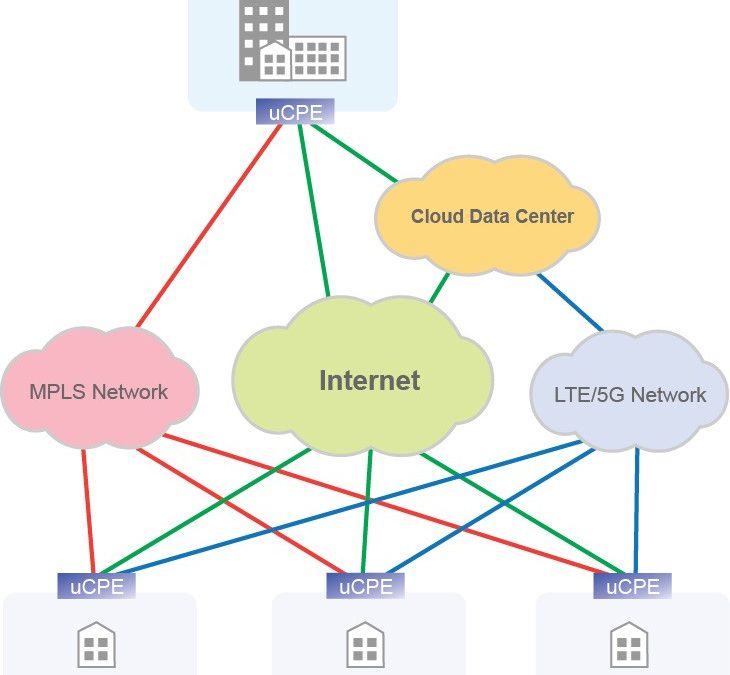Choosing The Best WAN Consultant For RFPs in 2022
No matter what your endeavor, choosing the right WAN consultant for your RFP is critical to success. Adding resources that have pertinent experience, a track record of success, and in-depth knowledge of the focus topic will help your team avoid mistakes and lead you to the best possible outcomes.
Selecting a WAN RFP consultant is no different and has become more challenging as the marketplace for enterprise WAN (Wide Area Network) solutions has morphed beyond basic circuit design and into architectures that must consider SD-WAN, network security, collaboration, operational support, and many other factors.
The right WAN consultant will become a welcomed extension to your IT team and will have a thorough understanding of your short term and long-term business and IT goals. This individual should have years of experience with WAN services and WAN technology life-cycles, as well as the skill set to guide your team through any or all of the following phases of WAN transformation. Further, the relevant consultant will be fluent in FinOps and a mastery of how to bridge the conversations between IT and executive leadership.
In this article, we will provide some insight into how to select the right WAN Consultant as we offer some insight into the enterprise WAN transformation process. Macronet Services categorizes the WAN transformation process into the following phases:
- Planning
- Auditing
- Design
- Sourcing
- Implementation
- Governance
Planning
Often it is generally clear to the IT team that a WAN project is on the horizon and it is critical to select a WAN consultant early in the process. Contracts might have renewed and termination dates of circuits and related services are uncertain, even in the most organized of IT shops. WAN technology evolves quickly and new industry jargon is constantly pushing IT to filter the reality out of the hype.
Once a project is recognized, the first step in planning is to identify each of primary and related stakeholders who will have an impact on the process throughout each of the subsequent phases. These stakeholders will include decision makers, process leaders, and will also include detail such as individuals who hold key pieces of information.
Planning will include a strategy for communicating the project with necessary business leaders and pulling feedback to ensure that the project will have the required support for success. Collaboration tools will be set to ensure seamless internal and external communication. The ideal WAN RFP Consultant will have the leadership skills to lead the Planning process and to set up the sub-teams for success in each of the following phases.
Auditing
Prior to the Design phase, it is important to have inventory, financial, and technical baseline information that will be referenced throughout the project. Even enterprises with sophisticated Asset and Expense Management tools are often working on data that is hard to interpret. The experienced WAN Consultant will quickly be able to locate, analyze, and sort the relevant data into formats that will be critical for the Design and Sourcing phases. Baseline financial and technical information, such as network performance statistics, is also very useful in executive briefings on the project. Don’t forget that termination dates and communications procedures for current services should be carefully considered as part of the planning phase to minimize or avoid termination liability charges.
WAN planning should also include a network planning methodology that incorporates an assessment of resources for all aspects of the project as well as network operations and maintenance across multiple time horizons.
In large enterprise deployments it is often necessary for the lead consultant to have quick access to a specialized team to meet deadlines or address other concerns. The consulting team at Macronet Services has a deep bench of industry experts who are ready to help.
Design
Network design is an iterative process that required input from the planning phase in effort to narrow down the design scope to a subset of technologies and physical locations. The final output must be in line with the needs of the business and must be operationally supportable by the business as well as the selected suppliers. Key steps it the design process include:
- Topological Design – definition of site classification, link types, and devices
- Network Synthesis – determination of Grade of Service, capacity, and routing requirements
- Network Realization – determination of how to meet requirements of capacity, availability, costs
The WAN RFP consultant should have current and relevant experience to manage the design phase in collaboration with the IT staff prior to engaging with solutions engineers from the suitable suppliers. Once the suppliers are selected in the sourcing phase, each of the supplier specific solutions should be documented in detail prior to presentation of final pricing. These documented designs can be used to communicated to key stakeholders throughout the following phases of the project and as a “source of truth” should they need to be referenced later in the account lifecycle.
Sourcing
The sourcing phase requires an organized approach that should be outlined in the Planning phase. Many small and medium businesses do not have a professional sourcing organization and many larger organizations have sourcing teams that will need pointed guidance and collaboration with the WAN consultant to ensure a successful outcome. Whatever the structure, general steps in the WAN sourcing process include:
- Suitable supplier identification
- Bid template generation
- RFP generation and process management
- Negotiation
- Vendor Selection
The WAN RFP consultant should have in-depth industry insight and references to bring forward a list of suitable suppliers to receive the RFP. In many cases, the suppliers will present solutions that offer varying solution models, and the bid sheet templates should be designed in advance allow for the suppliers to input their pricing in a logical manner for easy comparison. For example, some WAN solutions will include layers of security (see SASE) and options for Cloud Connectivity, each of which can be broken out as pricing and design options.
The experienced WAN RFP Consultant will have WAN RFP templates that outline the project vision, how and when the suppliers will communicate with the sourcing team, responding company overview, account team structure, the proposed architecture, technologies, integrations, implementation, terms and contract structure, account support, etc. The basic goal is to create a structure that has clear requirements and allows the respondents to clearly articulate their complete solution and commercial terms.
The format for supplier presentations should be managed to ensure that respondents are provided a level playing field to present their solutions and address questions. A weight-based Evaluation Matrix with comments is a valuable tool to guide the process and capture details for executive read-back.
Negotiation
The WAN RFP Consultant should be highly skilled in vendor negotiation and should have mastery of product pricing structures, benchmark pricing for recurring and non-recurring costs, terms and conditions, and other negotiable items such as long-term account support resources. It is critical to understand the details of service termination and how to achieve the best pricing along with the termination flexibility that is needed for the business. For example, there are many variations on business downturn and service portability clauses that should be negotiated, particularly now that large enterprises are focused on rationalizing real estate leases and offering temporary workspaces.
Many of the final negotiation points should be documented prior to final vendor selection. Skilled teams will generally down-select two suppliers who will participate in extensive negotiations on terms and conditions. The team should carefully manage the timeline if the plan is to pressure the vendors for end-of-quarter concessions.
Vendor Selection
A well-run RFP process should greatly simplify the final vendor selection. The WAN Consultant can consolidate the results of the Evaluation Matrix and provide an executive summary of the RFP output for the stakeholders to make their final decision. Notification procedures should have been outlined in the RFP and generally includes a down-selection as well as a final notification of award.
Summary
Planning and the right consulting talent are keys to success in WAN transformation projects. Experience cannot be overstated, so diligence in building the team is paramount. Top IT consultants, and WAN RFP Consultants in particular, are surprisingly not widely identified. Large consulting firms will charge a premium for less-than-stellar performance and do not provide the level of attention that smaller niche firms can offer for project engagements. Smaller firms are also likely to offer resources that are committed to working with your business over the long term and at fair rates. The team at Macronet Services has the talent, the tools, and the experience you can count on to exceed expectations. Contact Us anytime for a free evaluation of your potential project.
Related Posts
2 Comments
Comments are closed.
Recent Posts
- AI-Powered Humanoid Robots: Transforming Business, Homes & Connectivity
- Top IT & Network Design Consultants in Boston and New England: Macronet Services
- Top AI Consultants in New England: Why New Hampshire’s Macronet Services Shines in Boston and Beyond
- IXPs in the US and Internet Peering
- Top Tips for a Winning Agentic AI Contact Center for 2025
Archives
- June 2025
- May 2025
- April 2025
- March 2025
- February 2025
- January 2025
- December 2024
- November 2024
- October 2024
- September 2024
- August 2024
- July 2024
- June 2024
- May 2024
- April 2024
- March 2024
- February 2024
- January 2024
- December 2023
- November 2023
- October 2023
- September 2023
- August 2023
- July 2023
- June 2023
- May 2023
- April 2023
- March 2023
- February 2023
- January 2023
- December 2022
- November 2022
- October 2022
- September 2022
- August 2022
- July 2022
- June 2022
- May 2022
- April 2022
- March 2022
- February 2022
- January 2022
- December 2021
- November 2021
- October 2021
- September 2021
- August 2021
- July 2021
- June 2021
- May 2021
- April 2021
- March 2021
- December 2020
- September 2020
- August 2020
- July 2020
- June 2020
Categories
- Uncategorized (1)
- Security Services (71)
- Cloud SaaS (60)
- Wide Area Network (307)
- Unified Communications (196)
- Client story (1)
- Inspiration (9)
- Tips & tricks (25)
- All (19)
- Clients (12)
- Design (3)
- News (270)
- Music (1)
- Sports (1)
- Travel (1)
- Artificial Intelligence (3)





[…] return to the office with any regularity. Therefore, now is a good time to hire an experienced WAN consultant to audit your WAN environment and determine the best mix of services for your network […]
[…] have already covered the importance of selecting a qualified WAN consultant for your RFPs in a past post. But what about constructing a WAN RFP? For the uninitiated, it can be a daunting task filled with […]